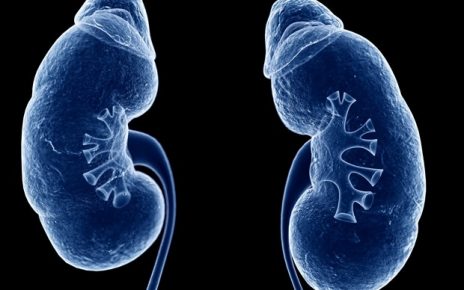In a recent study posted to the medRxiv* preprint server, researchers assessed the clinical severity of coronavirus disease 2019 (COVD-19) in hospitalized patients during the severe acute respiratory syndrome coronavirus 2 (SARS-CoV-2) Omicron wave in South Africa.

Background
The emergence of the fifth SARS-CoV-2 variant of concern (VOC) called Omicron in late November 2021 led to the resurgence of COVID-19 cases in South Africa and several other nations globally. Genomic sequencing data from South Africa indicated that Omicron comprised 86% and 99% of the sequenced samples from November and December 2021, respectively.
Omicron is characterized by more than 30 mutations in its spike (S) protein region relative to 15 in the previous SARS-CoV-2 variants. These mutations result in the extensive immune escape and a higher level of transmissibility of Omicron than the other SARS-CoV-2 VOCs. However, there is insufficient information regarding the clinical severity of COVID-19 caused by the Omicron variant.
About the study
In the current study, the scientists evaluated the clinical severity of laboratory-confirmed COVID-19 in hospitalized individuals during the Omicron-driven fourth wave of SARS-CoV-2 in South Africa. The team then compared it with the patterns observed over the D614G, Beta, and Delta waves.
The start and end of each SARS-CoV-2 wave were determined by the weekly occurrence of 30 laboratory-confirmed COVID-19 cases per 100,000 people. COVID-19-related hospitalization data were procured using an active SARS-CoV-2-specific surveillance program in South Africa, DATCOV.
Disease severity was compared across the four SARS-CoV-2 waves using post-imputation random effect multivariable logistic regression models. Severe SARS-CoV-2 was characterized as one or more of the following features: supplemental oxygen (O2) requirement, acute respiratory distress, intensive care unit (ICU) admission, mechanical ventilation requirement, or mortality.
Results
The results indicate that 629,617 people were SARS-CoV-2-positive during the Omicron wave compared to the 1,306,260; 726,772; and 553,530 individuals in the Delta, Beta, and D614G waves, respectively, in South Africa. The proportion of SARS-CoV-2-infected patients hospitalized during the Omicron-dominant COVID-19 wave was 8.3% relative to the 12.9%, 12.6%, 10% in the D614G, Beta, Delta waves, respectively.
About 33.6% of hospitalized COVID-19 cases experienced the severe disease in the SARS-CoV-2 Omicron wave compared to 63%, 63.4, and 52.3% in the Delta, Beta, and D614G waves, respectively.
SARS-CoV-2 patients hospitalized during the Omicron wave had a lower requirement of O2 supplementation relative to the Beta, Delta, and D614G waves. Further, the median length of hospital stay was four days during the Omicron-driven SARS-CoV-2 wave compared to six days in the Delta, Beta, and D614G waves.
Mortality was reported among 26.4%, 28.8%, and 21.5% of patients hospitalized during the Delta, Beta, and D614G waves compared to 10.7% in the Omicron-driven wave. Adolescents aged less than 20 years and children comprised 14.3% of total hospitalization during the Omicron wave relative to 5.5%, 3.3%, and 3% in the Delta, D614G, and Beta waves, respectively.
During the Omicron wave, 25.4% of the children aged less than five years were SARS-CoV-2-infected compared to 14.7% in the Delta wave. However, the number of hospitalized children with COVID-19 aged less than five years was similar among the Omicron and Delta waves and was higher than that in the Beta and D614G waves. Severe COVID-19 among hospitalized children younger than five years was lower in the Omicron wave relative to the Beta, Delta, and D614G waves.
The multivariable analysis indicated that patients demonstrated a high level of severe clinical presentations of SARS-CoV-2 during the Beta, Delta, and D614G waves relative to the Omicron wave. In addition, this incidence was higher in males, elderly, Indians compared to Whites, and those with comorbidities.
Conclusions
The study findings show that the Omicron-dominant fourth wave of COVID-19 reversed the rising SARS-CoV-2 cases and hospitalization trend seen in the previous three waves in South Africa.
Although during the Omicron wave, the SARS-CoV-2 transmission rates increased rapidly and were higher than the Delta, Beta, and D614G waves, the number of hospitalized cases, people affected with severe COVID-19, and mortality rates were lower than the previous three SARS-CoV-2 waves. This suggests that the Omicron wave has changed the SARS-CoV-2 epidemic curve, clinical profile, and mortality in South Africa.
Data from reports of other nations also indicated results similar to the current study, suggesting a less severe form of COVID-19 with Omicron, regardless of the variation in previous infections and vaccination status in South Africa.
*Important notice
medRxiv publishes preliminary scientific reports that are not peer-reviewed and, therefore, should not be regarded as conclusive, guide clinical practice/health-related behavior, or treated as established information.
-
Jassat, W. et al. (2022) "Clinical severity of COVID-19 patients admitted to hospitals during the Omicron wave in South Africa". medRxiv. doi: 10.1101/2022.02.22.21268475. https://www.medrxiv.org/content/10.1101/2022.02.22.21268475v1
Posted in: Medical Science News | Medical Research News | Disease/Infection News
Tags: Adolescents, Children, Coronavirus, Coronavirus Disease COVID-19, covid-19, Genomic, Genomic Sequencing, Hospital, Intensive Care, Laboratory, Mortality, Omicron, Oxygen, Protein, Respiratory, SARS, SARS-CoV-2, Severe Acute Respiratory, Severe Acute Respiratory Syndrome, Syndrome

Written by
Shanet Susan Alex
Shanet Susan Alex, a medical writer, based in Kerala, India, is a Doctor of Pharmacy graduate from Kerala University of Health Sciences. Her academic background is in clinical pharmacy and research, and she is passionate about medical writing. Shanet has published papers in the International Journal of Medical Science and Current Research (IJMSCR), the International Journal of Pharmacy (IJP), and the International Journal of Medical Science and Applied Research (IJMSAR). Apart from work, she enjoys listening to music and watching movies.
Source: Read Full Article



